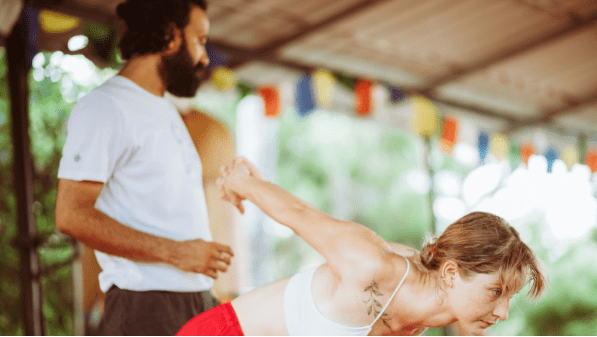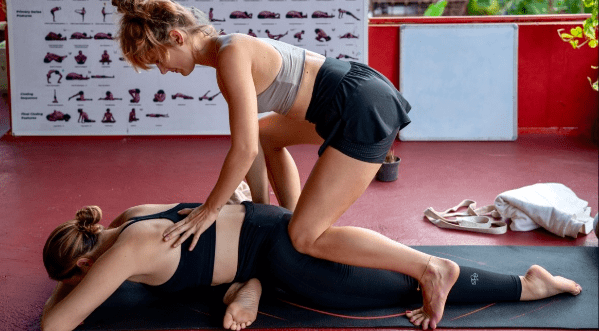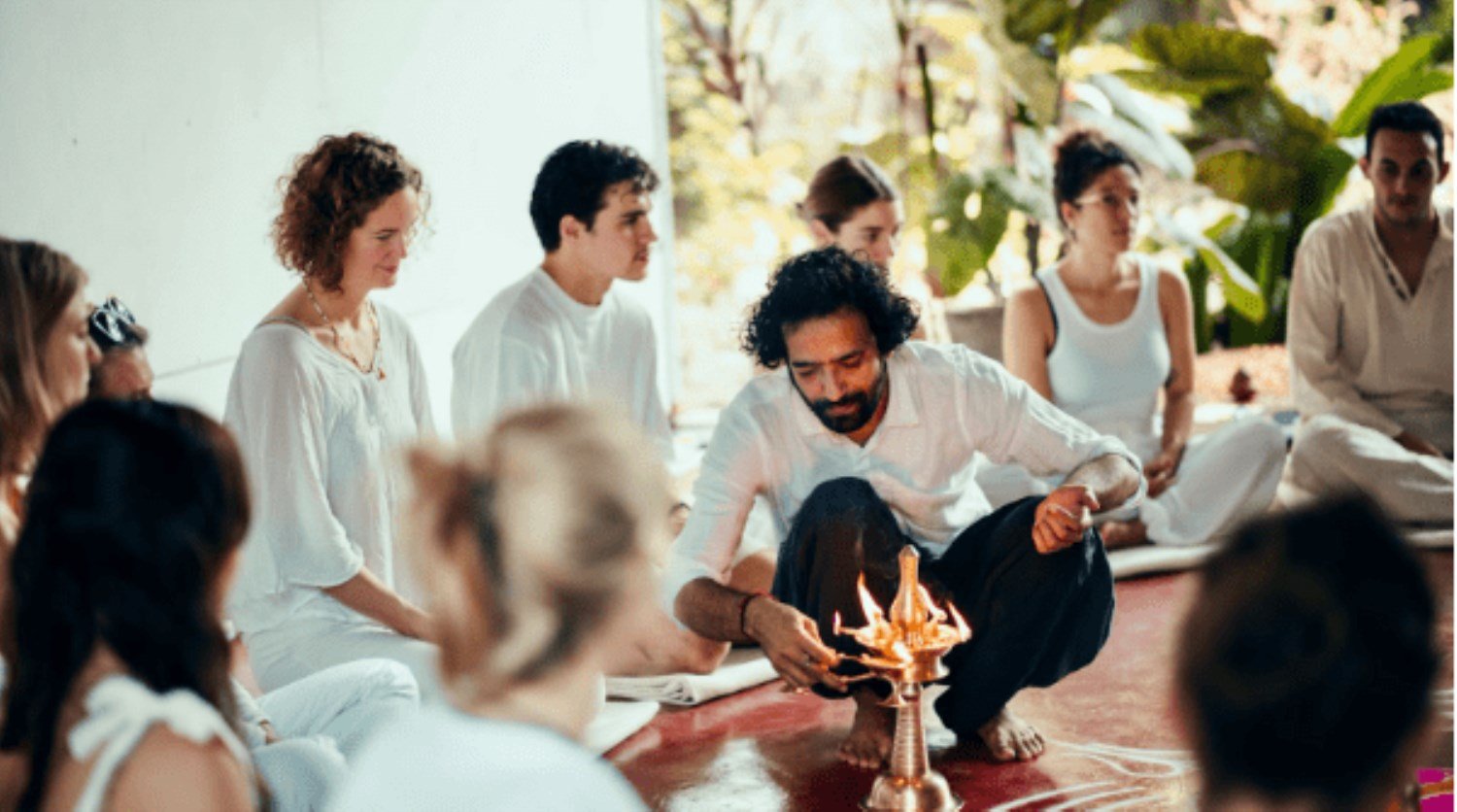10 Things To Know Before Undertaking Yoga Teacher Training Journey
Have you ever considered opting for a yoga teacher training (YTT) program? If so, you’re likely looking for deeper insights to determine if it’s the right path for you. As someone who has practised and taught yoga for years now, I can confidently say that, aside from my first yoga class, enrolling in a teacher training program was the most transformative decision of my yoga journey. It wasn’t just about learning how to teach—it was about evolving my practice and, in many ways, myself.

I’m excited to share everything I’ve learned to encourage you to take that next step in your yoga journey. This 10-pointer guide will provide a comprehensive overview of what to expect during YTT and why it might just be the perfect fit for you.
#1 You Don’t Have to Be Super Flexible to Start

A common misconception is that to be a yoga teacher, or even just to participate in teacher training, you need to have a super bendy, flexible body. In reality, flexibility is not a prerequisite. While demonstrating certain poses does require some range of motion, you don’t need to be able to execute advanced postures to cue others into them. Many times, students feel more at ease when their teacher isn’t performing the full expression of every pose—it removes the pressure to mimic the teacher exactly.
Yoga is not about touching your toes. It’s about creating a union between the body, mind, and spirit. Everyone’s body is different, and yoga should be accessible regardless of physical capabilities. As we age, our practice may shift, and that’s perfectly normal. So, don’t let flexibility (or the lack thereof) be a barrier to entering teacher training.
#2 Yoga Teacher Training Can Be Physically Demanding

Be prepared—yoga teacher training can be physically intense! Beyond the regular practice during training hours, many programs also require you to attend a certain number of yoga classes outside of your training sessions. This can add up to a lot of time on the mat, which might be more than you’re used to. Remember to take care of yourself throughout the process. Nourish your body with healthy food, get plenty of rest, and allow time for self-care.
Some programs only allow a limited number of absences, so be ready to commit and work hard. But don’t worry—this intensity helps you build both endurance and discipline, essential qualities for any yoga teacher.
#3 Different Course Options Suit Different Lifestyles
If you’ve always dreamed of becoming a yoga instructor but find yourself balancing a busy lifestyle or a 9-to-5 job, don’t worry. Yoga teacher training comes in various formats that can fit into your schedule. You can choose from part-time courses, weekend workshops, online training, or even immersive programs abroad. However, be mindful that some programs require additional commitments, like attending extra classes outside of training hours.
Finding a program that works with your lifestyle is crucial, but with so many options available, it’s easier than ever to tailor the experience to your needs.
#4 You Don’t Have to Teach After Completing the Program
One of the best-kept secrets about YTT is that you don’t have to teach after completing the training. Many people enrol simply to deepen their practice and knowledge of yoga without any intention of becoming a teacher. Yoga teacher training offers a rare opportunity to learn about yoga philosophy, history, and the broader spiritual aspects of the practice in a structured, group setting.
If your primary goal is to enhance your practice, YTT is a fantastic way to do that. But if you do want to teach, the program will also equip you with valuable skills, from structuring classes to cueing poses effectively.
#5 You Don’t Need to Know Sanskrit Beforehand
Sanskrit, the ancient Indian language often used in yoga to describe postures, can be intimidating at first. However, you don’t need to be fluent in Sanskrit before entering your YTT. During training, you’ll learn the names of the poses and gain a deeper understanding of the language’s importance in yoga. Learning Sanskrit takes time and repetition, and you’ll have plenty of opportunities to practice during and after your training. So, don’t worry—Sanskrit knowledge will come with time.
#6 Scholarships Are Available for Teacher Training
It’s no secret that yoga teacher training can be expensive. Programs can run upwards of a few thousand dollars, which can be a barrier for some. The good news is that scholarships and work-trade opportunities exist. Some studios offer financial assistance, allowing you to cover part or all of the tuition in exchange for helping out around the studio. Yoga clothing brands also sometimes provide scholarships for teacher training, so keep an eye out for those opportunities.
Financial barriers shouldn’t prevent you from pursuing your passion. With some research, you might find a way to make it more affordable.
#7 You’ll Learn More Than Just How to Teach Yoga Classes
YTT isn’t just about learning how to sequence a class or cue postures. You’ll also understand the deeper aspects of yoga, including its spiritual and historical roots. Topics like the eight limbs of yoga, Ayurveda, and the philosophical aspects of the practice are often included. Many programs bring in guest instructors to teach speciality areas like kids’ yoga, aerial yoga, chanting, and more.
This comprehensive approach allows you to gain a holistic understanding of yoga beyond the physical postures taught in most studio classes.
#8 Certification Isn’t Required, But It’s Incredibly Helpful
Interestingly, you don’t technically need a yoga teacher certification to teach yoga. There are no formal laws requiring certification to teach at a studio. However, getting certified through a recognised program can significantly boost your credibility and open doors for you, especially if you’re looking to teach at a professional studio.
Having a certificate not only sharpens your teaching skills but also gives you a competitive edge when applying for jobs.
#9 You’ll Build a Like-Minded Community
One of the most rewarding aspects of YTT is the sense of community that forms among trainees. You’ll meet incredible, like-minded people who share your passion for yoga. This can lead to lifelong friendships, and these connections may even help you professionally down the road. Your fellow trainees could become future colleagues, and the bonds you form during training can support your growth as both a practitioner and teacher.
#10 A Final Word on Yoga Teacher Training
If you’ve been researching yoga teacher training, you’re probably already close to taking the plunge. It’s a deeply personal decision, and no one can tell you when you’re ready. However, if you feel the call to deepen your practice, expand your knowledge, or even share yoga with others, YTT could be the next step in your journey. Take your time, choose a program that fits your lifestyle and needs, and trust that when the time is right, you’ll know it.
Joining a yoga teacher training course is not just about learning to teach—it’s about growing as a practitioner and finding a deeper connection with yourself and the yoga community. If you’re feeling ready, this experience might just be the transformative step you’ve been waiting for.
Conclusion
Yoga teacher training is a profound and life-changing journey that goes far beyond just learning how to teach. Whether you’re looking to deepen your practice, explore the spiritual roots of yoga, or undertake a teaching career, YTT offers a transformative experience that touches every aspect of your life. From the flexibility in course options to the welcoming community you’ll build, this path is accessible to anyone with the passion and commitment to grow. Remember, yoga is for everyone, regardless of physical ability, background, or budget.
If you’re feeling drawn to the next step in your yoga journey, trust your intuition and take the leap. The rewards—both personal and professional—are endless, and you’ll come out of the experience with a new sense of purpose, knowledge, and a deeper connection to yoga. Your future self will thank you for it.

Leave a Reply